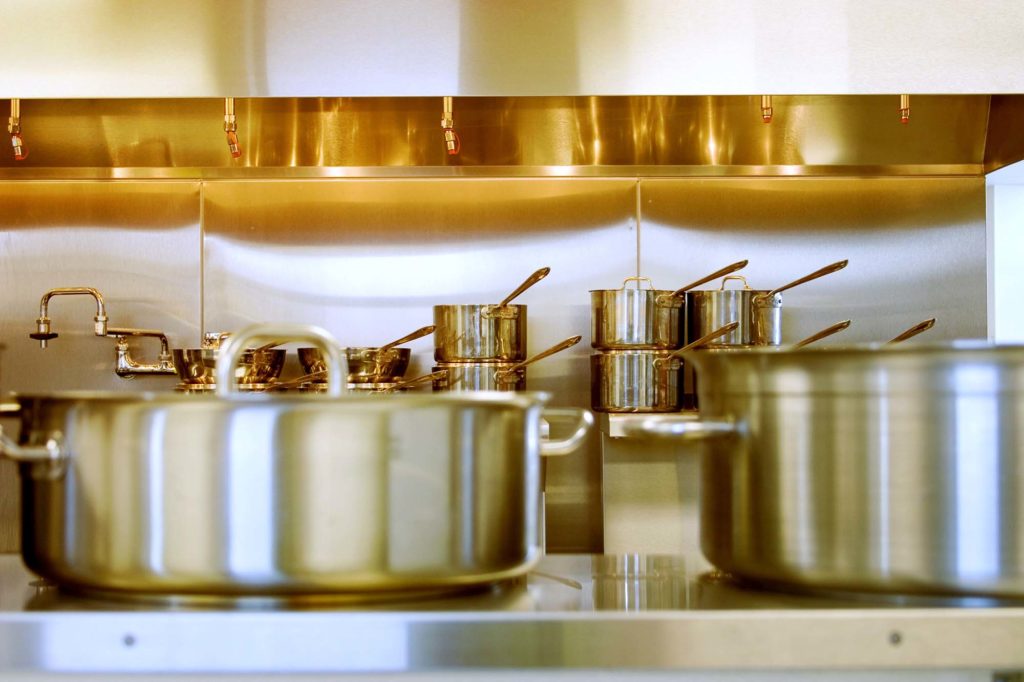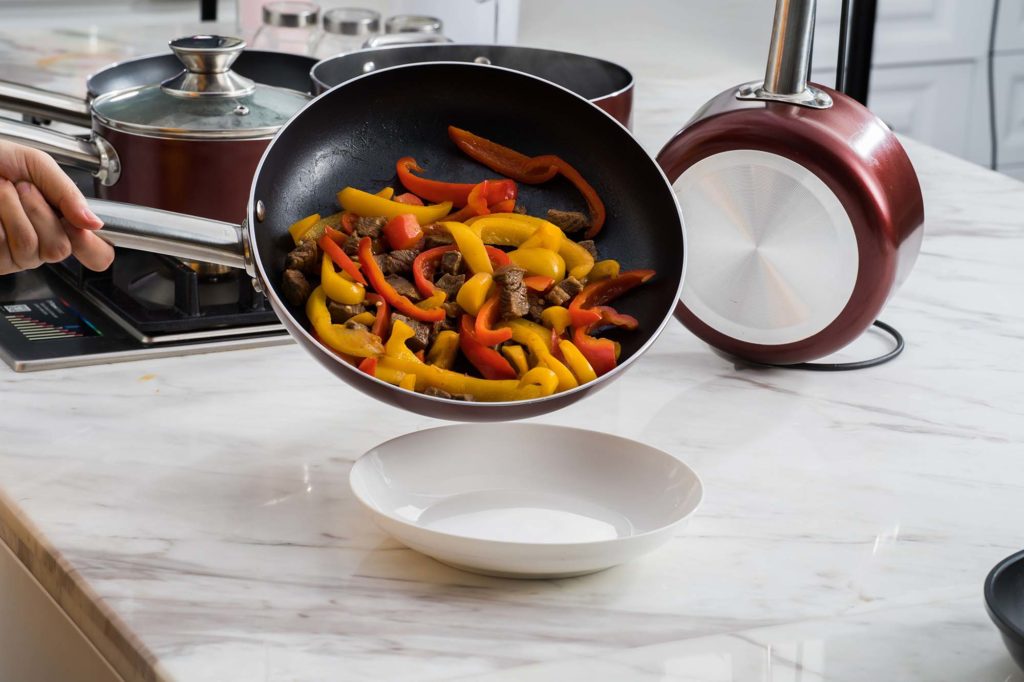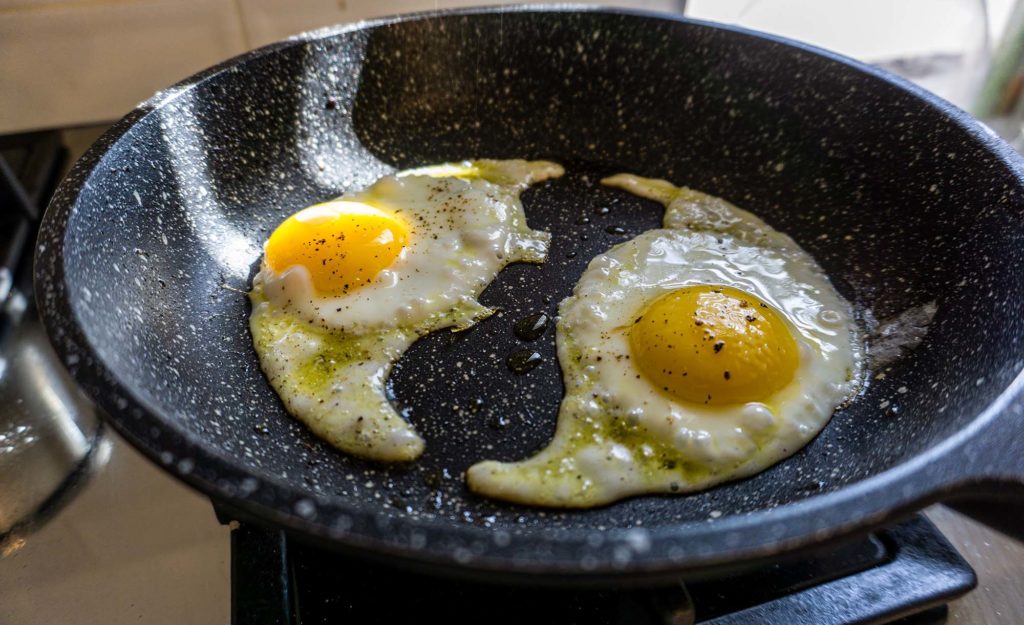As the commander-in-chief of your home kitchen, you have to make tough, often contradictory choices all the time. What kind of cooking oil will give you the ability to deep-fry food, but also put on a delicious, healthy salad? Do I really need a new blowtorch if I decide to get expensive sous vide immersion circulator? How do I understand the pros and cons of nonstick vs. stainless steel cookware?
In this article, we will give you enough information to be able to answer the last question. You are quite welcome!
What will drive your decision toward a product is a combination of price and quality. In the case of cookware, the latter is decided by durability, the ability to control and conduct heat, and (since we are putting nonstick pans on display) cookware’s ability to not have your food stick to it faster than necessary.
Other important factors are whether you can put your new pots and pans into an oven and dishwasher, whether you can cook acidic foods in them and, importantly, whether they will poison you with toxic chemicals.
We will touch upon these qualities briefly before we make an overall recommendation below. Let’s dive in!
Durability
Stainless steel cookware is known for being, well, hard as steel. Compared to other types of cookware, this material is extremely durable and, with even a modicum of care, should last you a lifetime!
High quality stainless steel pans are virtually indestructible, and usually comes with a tightly screwed, ergonomic handle that stays cool while the cooking surface is red-hot. Thus, stainless steel has been a darling of professional and home chefs alike because of their versatile applications, with an endless lifespan.

Nonstick cookware, on the other hand, comes in all shapes and sizes – and with various types of nonstick solutions. These can be copper nonstick pans, with titanium coating or aluminum ones with plasma coating or a variety of other base materials and coating solutions. Thus, it is next to impossible to pronounce a sweeping verdict on all of them in any term, including durability. However, as a general rule, most base materials such as copper or aluminum are much less durable than stainless steel. An obvious exception are the clad stainless steel pans made with nonstick coating like this Ninja 3-pack pan set.
One category of nonstick pans has coating that can be easily scratched – like Teflon cookware. This problem can be addressed (clean the scratched pan using a nonstick cleaning it, apply coconut oil to the scratches and heat it up). However, it does take time, effort and special care to make sure that your nonstick Teflon pan lasts as long as your average, ordinary stainless steel one.
The Ability to Control and Conduct Heat
Stainless steel cookware’s gets hot quicker than from its cast iron and carbon steel cousins. However, this material is still one of the lower thermal conductors among other alloys. This means that nonstick cookware made from aluminum or copper will become hot almost instantaneously when compared to stainless steel. If saving an extra minute or two is hugely important to you (as it may be for a line chef), use some other material instead of steel. In fact, this is why professional chefs often prefer to use less durable, but highly conductive aluminum, including nonstick.
The Nonstick Factor
Food sticking to the bottom of a red-hot pan is the bane of many an aspiring home chef’s existence. After all, no one wants to break that precious crust on top of a luscious chicken thigh, or damage delicate fish, splatter your stove top with hot oil trying to get it off with metal utensils, only to have the stuck parts burn to the crisp and smoke up your house.
Sticking occurs when the pan material expands when heated and thus close the tiny pores that exist on the cooking surface grabbing onto the outer layers of food, which causes it to stick.

Thus, nonstick pans of all stripes and colors exist and are in great demand worldwide for a good reason. Great scientific minds all over the world have created the various solutions that eliminate the tiny pores as much as possible so that your food slides right off the pan at any desired moment.
Stainless steel cookware, on the other hand, is notoriously sticky considered one of the worst culprits in this department. With enough experience, you can learn to avoid this stickiness to occur by bringing your pan to high to medium heat, and then not moving the food for the first couple of minutes. However, nonstick pots and pans win this category by definition, as they don’t require any specialized knowledge or experience to simply make an omelet.
Others Important Considerations
Oven safe, Dishwasher safe and the Ability to Withstand Acidic Foods
Stainless steel cookware is a clear winner for all of these categories. We already said that stainless steel pans are virtually indestructible when it comes to applying heat and water. They are also famously not reactive with acids, which makes a lot of chefs compare it favorably with other kinds of steel cookware in the market.
Nonstick cookware is not always dishwasher safe and can be oven-safe, depending on the type of coating and the type of its base material. They are always easy to clean, and machine dishwashing is never really necessary.

In terms of oven safety, usually, your new nonstick pan’s packaging will tell you exactly up to what temperature your pan can withstand. To be on the safe side, however, we would not recommend transferring your steak directly into a hot over while it still sizzles on that copper nonstick pan.
Nonstick pans made from copper and aluminum are especially susceptible to acids, especially if the nonstick coating is damaged and acid gets to the base material. Acid reacting with aluminum can result in a metallic taste in your food, while copper can dissolve into food and cause adverse health effects.
Toxicity
The nonstick pans – and especially those of the Teflon variety – often get a bad rap for apparently slowly killing you with toxicity of their surface coating. We have to be fare and tell you with confidence that all other nonstick coating materials are safe for you, and even Teflon is – great majority of the time. Teflon only starts breaking down at around 530 °F, which is usually way over the temperature for most useful cooking applications at home. If you still worry about it, we recommend looking into high quality ceramic cookware like this amazing Chatham ceramic 10-inch skillet which is one hundred percent safe and is as nonstick as it ever gets.
What is the Verdict?
We might have a bias, but in the battle of stainless steel vs. nonstick, we are certain that stainless steel wins in most of the categories, with the only obvious exception of non-stickiness. If you are as convinced as we are, here are three incredible stainless steel pans we would love to recommend for your home use.
